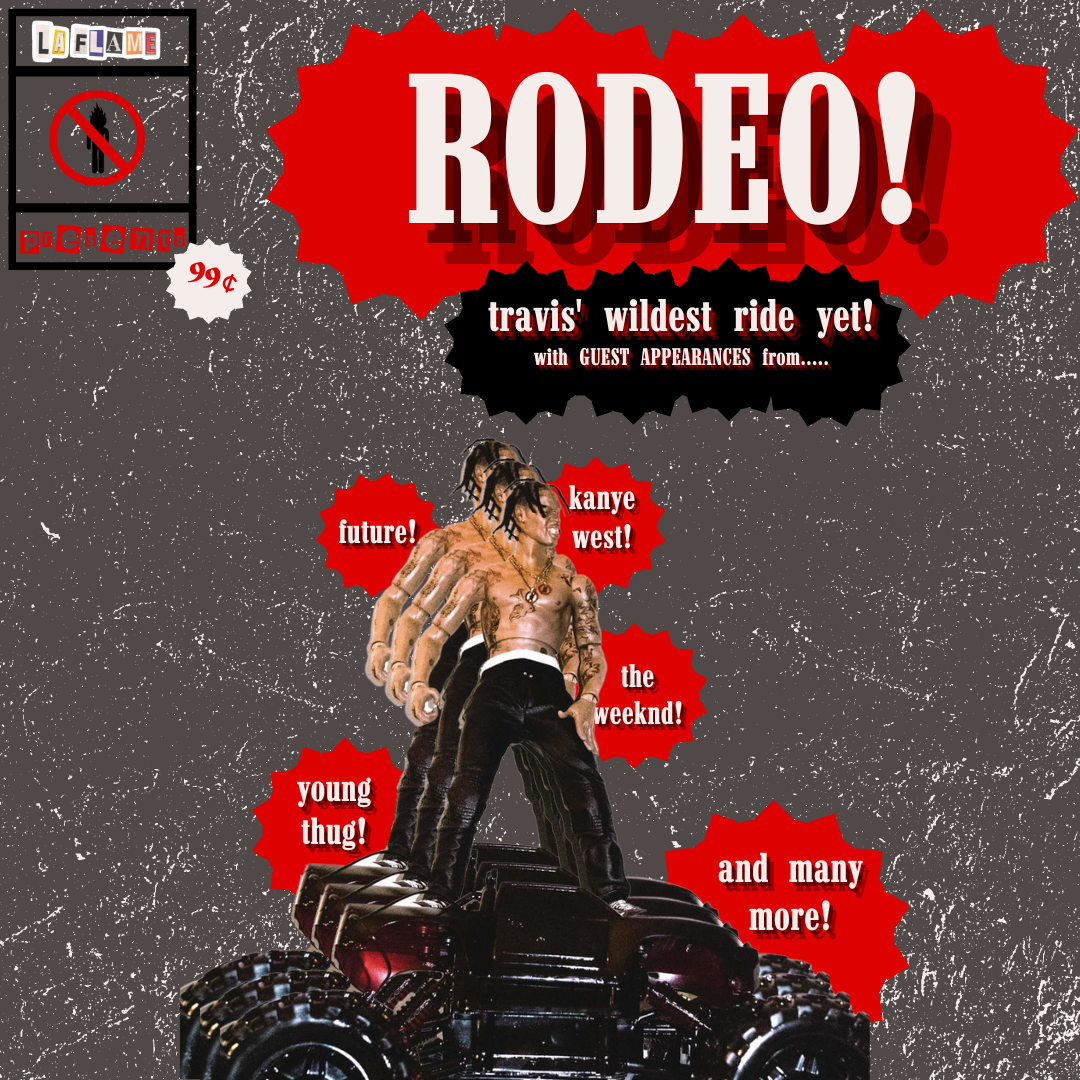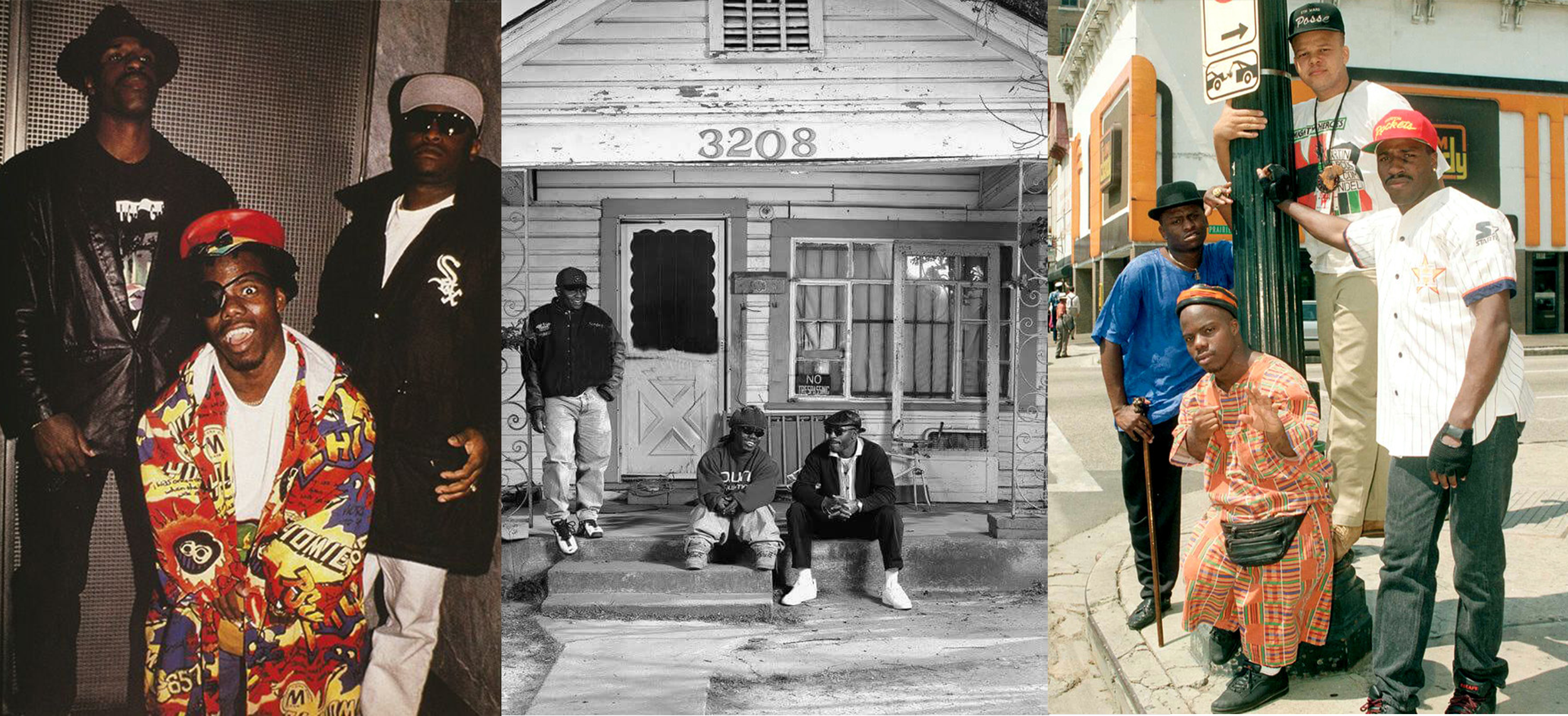How Travis Scott Introduced the World to the Rap Rockstar with “Rodeo”
by Miles Hagan
Before the Nike collaborations, McDonald’s deals, and hit records, Jacques Bermon Webster II was a teenager making beats out of his mother’s home in Houston.
To fully understand Travis Scott’s greatest work to date we must first examine the foundation, the days before Rodeo. After dropping out of college without telling his parents, he would move to New York then LA sleeping on couches and paying for studio time and flights with money he was getting for books and food. His parents would eventually figure out his scheme and cut him off when they popped up at his UT San Antonio dorm that he abandoned months ago. Ambition, confidence, and at this point his back being against the wall is what allowed him to create songs that would eventually get him noticed by the likes of T.I. Soon after he found himself back on a flight to New York City to work on the Cruel Summer Sessions with none other than THE college dropout himself, Kanye West.
From here Travis would go on to release his first two projects, Owl Pharaoh and Days Before Rodeo. He was named a XXL Freshman in 2013 and was recognized by most as Ye’s prodigy. His early music has a dark and muddy southern influence with a wide range of features from Migos and Meek Mill to James Fauntleroy and Bon Iver. His talents as a producer is what originally got the music community interested in him, so production is at the forefront of all of his work. Songs like “Upper Echelon”, “Mamacita”, and “Sloppy Toppy” showcase his acumen for hit making and thumping production, all while being just lyrical enough to not get him crucified by the older hip-hop community. While these are all excellent, a track like “Bad Mood Shit on You” is what was truly an example of the greatness that Travis would deliver only a year later.
What Rodeo created was the rap rockstar. SoFaygo, Lil Uzi Vert, Playboi Carti, Don Toliver as well as many others have been able to add a whole different element to their rap persona because of La Flame. This was the first time in Travis Scott’s career that both the music and the crowds were large enough for his live performances to reach their full potential. It is very fair to say we may never see concerts like this again.
Rap and Hip-Hop culture has always been about being cool. Oftentimes this doesn't mean jumping in mosh pits and walking out of concerts with your clothes dirty, but that is exactly the energy Travis brought back to the genre. Today, almost every rapper is calling for the crowd to open up the pit at their shows. Not only that but this trend has caused artists to make songs that perform better in live settings.
For an artist as talented as Travis Scott was from an early point in his career, especially from a production standpoint, most of their improvement can be done in engineering and curation. That is exactly what this album was for Travis. The sound is still dark and dynamic, but during moments like “Antidote” that creativity and energy becomes anthemic. He is no longer the mysterious outsider but rather the rager we have become so familiar with. Travis had repeatable hooks on Rodeo, so it was much more feasible to play songs like “Nightcrawler” in clubs and parties as well as in the mosh pit. Upon the record's initial release and during its lead up, it felt as if Travis was becoming the voice of the youth. Which is exactly what he speaks about on the opening track. A key to him doing this was Kid Cudi.
As we know it in 2022 Travis has a signature hum on tracks that is almost more recognizable than the one he modeled his after. Back in 2015 was the first time we had heard someone successfully execute such harmonies since Cudi, and he was using a heavy auto tune. Fast Forward to modern day and the majority of young rappers rely on some sort of autotune to achieve a melodic feel to their tracks.
This is the norm. Going back and listening to Rodeo it is interesting how at that time they said Travis was relying more on his autotune than his rapping. In reality these are some of the most innovative and impressive flows and bars in his catalog. On an album filled with features there are no songs when it feels like he is the weak link, and on several occasions he has the superior performance to some household names. This versatility is what allows him to trade verses with The Weeknd on the criminally underrated “Pray 4 Love.”
Rodeo is representative of the peak of what Trap music has been. For years the likes of Future, Gucci Mane, Young Thug and others released projects that told stories of the streets of the South over aggressive base finding flow pockets that most rappers could only dream of, and then even still could never execute. This music dominated their region and every strip club, and is the reason Future claims he is bigger than Jay-Z in the streets. The problem is that that sound had not translated to major critical acclaim or chart topping success.
Days Before Rodeo is where Travis first really showed his ties to the Atlanta Trap scene with features from Young Thug, Rich Homie Quan, and Migos. The only difference is this time he brought Justin Beiber to the trenches. On top of continuing with many of those same features on his debut, he also had ATL legend T.I. narrating the project.
What Travis Scott did with Rodeo was take the essence of the more traditional trap sound and couple that with more cinematic elements from Mike Dean and Kanye. The music then elevated to superstar levels when his performances of this era became the stuff of legend. While all Trap in 2022 doesn’t sound like Travis Scott, he showed both artists and listeners all that it could be with unlimited resources. What he did to legitimize the subgenre to critics and the causal consumer can not be overlooked.
Miles Hagan is the co-founder of StereoVision.
Thanks for reading! Make sure to follow us on Instagram to stay up-to-date on everything hip-hop.


































